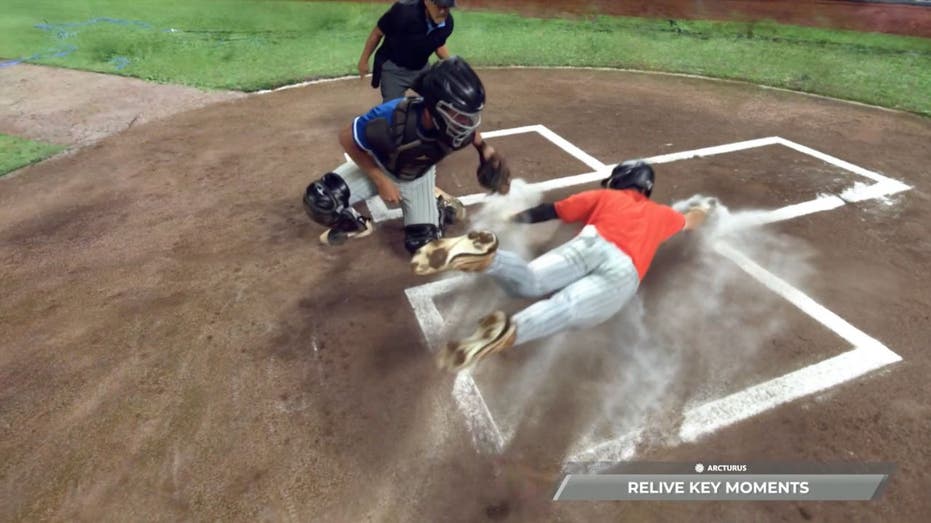Will 3D Technology Revolutionize the Sports Industry?

The sports industry stands on the brink of an extraordinary technological transformation, with 3D digital twin technology poised to be a game-changer.
Innovative Companies Leading the Charge
Pioneering companies like Arcturus are harnessing state-of-the-art advancements to create hyperrealistic virtual replicas of live sporting events. This technology promises to revolutionize the way fans engage with their favorite sports, while also enhancing how teams train, strategize, and manage their players.
Understanding 3D Digital Twin Technology
At its essence, 3D digital twin technology involves creating a virtual replica—or “digital twin”—of a real-world environment or event. In sports, this translates to the meticulous replication of entire stadiums and live games with stunning accuracy. For instance, Arcturus strategically places cameras around baseball stadiums to capture real-time action, generating a 3D digital clone of the game. This allows fans to zoom in and out, viewing the action from any angle, offering an unparalleled level of immersion.
Future Prospects of Real-Time Viewing
Currently, this technology is primarily utilized for postgame highlights, but the future holds exciting potential for real-time viewing. Imagine being able to watch a game from the vantage point of your favorite player or zooming in on specific areas of the field as if you were there in person.
Transforming the Fan Experience
The true beauty of this technology shines through in the fan experience. With 3D digital twins, fans can virtually place themselves in any seat in the stadium or even on the field, adding a new dimension to watching sports. Accessibility is also a key benefit, allowing fans to engage with their favorite teams from anywhere in the world.
Enhanced Engagement Through Augmented Reality
Moreover, features such as augmented reality overlays and real-time statistics are making the viewing experience more interactive than ever. Major League Baseball (MLB) has already begun incorporating similar technology into its app, offering fans live 3D gamecasts that provide detailed player statistics, including pitch velocity and launch angles.
Advancements in Training and Strategy
The implications of digital twin technology extend far beyond fan engagement; they are also revolutionizing how teams approach training and strategy. By creating virtual replicas of players based on biomechanical and physiological data, teams can simulate match scenarios, monitor fatigue levels, and prevent injuries with remarkable precision. Coaches can experiment with various game strategies without risking player health, testing how athletes might respond under pressure or against specific opponents.
Innovations in Stadium Design and Management
Digital twins are also making waves in stadium design and management. Fans can explore stadiums virtually before purchasing tickets, ensuring they select the best seats for their experience. Furthermore, stadium operators can optimize factors such as air circulation and seating arrangements for maximum comfort. Digital twins also provide teams with opportunities to showcase branding to sponsors and offer premium suite customers virtual walkthroughs of their offerings.
Overcoming Early Challenges
While the promise of 3D digital twin technology is immense, it does come with its challenges. Early implementations have encountered technical glitches, such as those seen in MLB’s 3D broadcasts, which have occasionally resulted in humorous yet unintended visual effects. Additionally, some fans may initially find it difficult to adapt to this high-tech viewing experience. However, as augmented and virtual reality technologies become increasingly mainstream, these obstacles are likely to diminish.
The Future of Sports is Here
Despite these challenges, experts agree that digital twin technology represents the future of sports. With continuous advancements in artificial intelligence and sensor technologies, we are only beginning to explore the possibilities.
A Turning Point for Fans and Athletes
The integration of 3D digital twin technology in sports signifies a pivotal moment for both fans and athletes. From immersive viewing experiences that bring games to life in unimaginable ways to tools that enhance player performance and extend careers, this innovation is set to redefine every facet of the sporting world.
Your Thoughts Matter
What do you think about the integration of digital twin technology in sports? Is it pushing the boundaries too far, or can it successfully balance innovation with the traditional aspects of the game? Share your thoughts with us!
For more insights and tech tips, consider subscribing to our newsletter. Your feedback and questions are always welcome!




